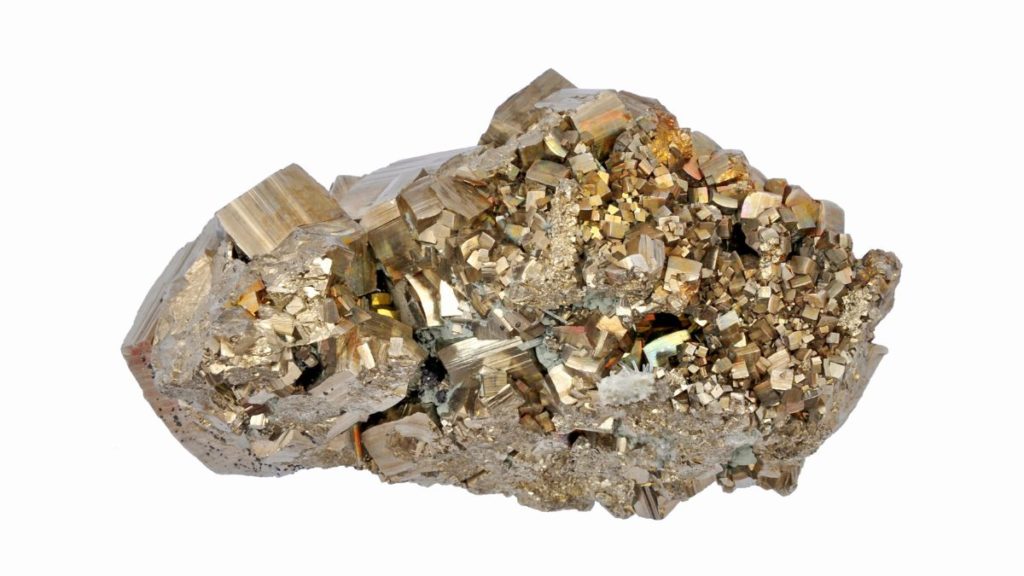
This mineral forms as cubic, pyritohedral, or octahedral crystals; twinning is common.
The crystal faces are frequently striated. Pyrite can be massive, granular, reniform, stalactitic, botryoidal, and nodular. The pale yellow color gives rise to its nickname, “fool’s gold.” It has a greenish-black streak. Pyrite is opaque and has a metallic luster.
FORMATION Pyrite is a common accessory mineral in igneous, sedimentary, and metamorphic rocks.
TESTS Gives off sparks if struck with a hard metal object. Fuses quite easily.
Group: SULFIDES
Composition: FeS₂
Hardness: 6–6½
SG: 5.00–5.03
Cleavage: Indistinct
Fracture: Conchoidal to uneven